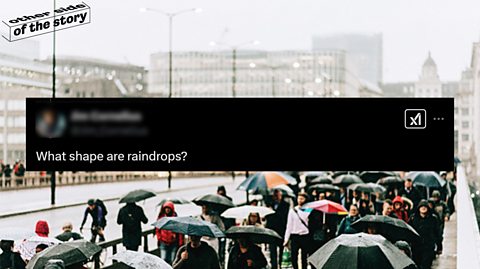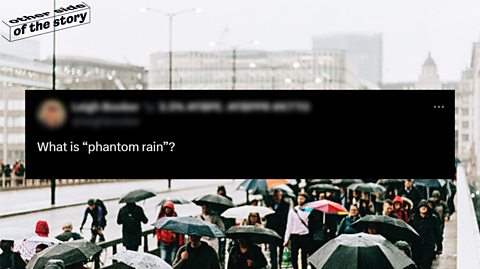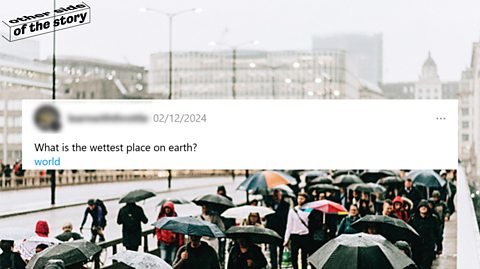British people are often accused of being obsessed with the weather, and perhaps this is one stereotype that has some truth in it? A 2024 survey found that the average adult in the UK spends about nine minutes a day talking about the subject!
It's little surprise then that weather is also a very popular topic on social media, with the hashtag #rain being used in more than 52 million posts on Instagram.
There are also lots of questions about the rain on social media, so take a look at this short video with BBC Weather presenter Sophia Herod, as she uncovers some interesting rainfall facts and debunks some myths.
Now you may think that all raindrops are in the shape of a tear, or that all rain always falls from the sky to the ground? But are those things true?
Nope and here’s why…
Raindrops come in all shapes and sizes, but they all start off spherical in shape. As the drops fall, they distort and change shape and size due to air resistance. Some may form into what may look more like a burger bun or even a little bit like a parachute. The bigger the raindrop, the faster it will fall.
And rain that doesn’t fall to the ground?
Well, that’s sometimes called phantom rain – or virga – which happens when rain that’s falling from a cloud evaporates before it reaches the ground.
Finally, if you’ve ever wondered, where’s the wettest place in the world?
Well, that’s Mawsynram in the Maghalaya State of India. For a start it’s high up in the Garo Hills, to the south of the Himalayas. The southwestern monsoon piles in with moist winds which are caught against the mountains bringing huge amounts of rainfall to the village below. Which receives an astounding 11,971 mm of rainfall on average every year. To put this into perspective the UK's average annual rainfall is a tenth of that.
There you go, you learn something new every day.
Are raindrops shaped like tears?

The common myth that raindrops are shaped like tears is thought to have stemmed from the fact that when rain hits windows, they streak down the glass – similar to tears.
However, raindrops can appear in all shapes and sizes even though they all start off spherical in shape. When raindrops fall, they can change shape and size because of resistance, meaning they can look like burger buns or even parachutes. The size of a raindrop will determine how fast it falls.
Is it true rain doesn’t always fall to the ground?

Yes - rain that doesn’t fall to the ground is called phantom rain or virga, and you will most likely see it when a cloud is in the distance. Phantom rain occurs when the rain that is falling from a cloud evaporates before it reaches the ground.
Is the UK the wettest place on earth?

It may feel like it sometimes but, believe it or not, the UK isn’t the wettest place in the world. That honour actually goes to Mawsynram in the Maghalaya State of India. The town, which is high up in the Garo Hills to the south of the Himalayas, receives on average 11,971mm of rainfall each year.
In comparison, the UK only receives a tenth of that! The rain in Mawsynram comes from the southwestern monsoon piles and the moist winds that are caught against the mountains.
Misinformation and the weather
With so much fascination about it, it's not surprising that misinformation about the weather can easily spread online. When doing research or looking for an up-to-date forecast, make sure you use trusted sources such as the Met Office where the information is compiled by experts.
With advancements in technology, AI images can be spread online which make weather events such as flooding and hurricanes look more extreme than they actually are. If you are unsure about an image you have seen online, why not do a reverse image search to find the original source as this can help you to decide whether an it's real or not.

Not sure if the news you’re seeing on social media is true or false? Can you always tell if the things you see online are real or fake? Learn how to get the other side of the story with our quizzes, videos and explainers.


